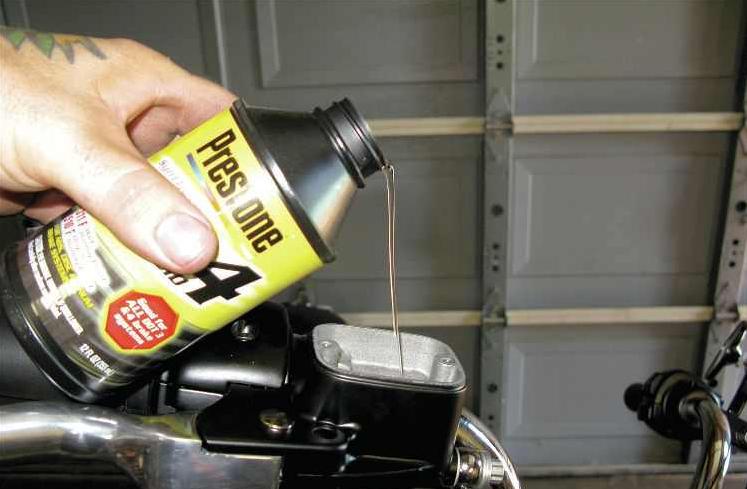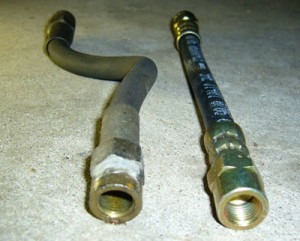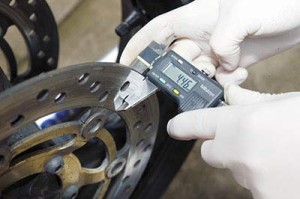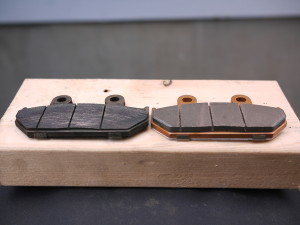How to Check Café Racer Brakes
So today’s tutorial is: How to Check Café Racer Brakes.
The Brake Checklist
The checklist, actually the entire post, can be used for other bikes (and perhaps also cars) as well. So, learn and enjoy!
The Brake Fluid
Brake fluid absorbs moisture and becomes less effective as time passes by. Replace the brake fluid of your vehicle every one to two years. This way, the performance of your brakes will always be great.
Motorcycles could have up to two brake fluid reservoirs, one for the front, usually found on the handlebars and one for the back. Both should be checked regularly. You should only add more liquid from a new and sealed bottle as brake fluids will absorb moisture over time. If your brake pads are thin, then you might want to replace them. However, be careful, as spilling brake fluid will damage the metal on your bike.
Brake Lines
Fitting braided steel brake lines will improve the performance of your brakes up to 50%!
Most people do not realise that the typical life of a rubber brake hose assembly is only six years. Many factors influence the brake hose deterioration, one of them being the contamination by brake fluid.
Brake lines deteriorate from the outside as well as the inside. While the signs of deterioration, such as cracked, hardened or weak hoses can often be diagnosed from the outside, the damage to brake hoses on the inside can go undetected. Usually, it is too late when you notice it. Brake hose should not be hard, brittle, soft or spongy.
Brake hose should feel firm but flexible. Also check for visual aspects like:
- Cracks in the outer skin of the brake hose - you may need to bend the tube to see this.
- Blisters or bubbles in the brake hose Chafe marks - from brake hose rubbing against some other component.
- Wet stains the where brake hose starts leaking.
- Noticeable bulging or expansion of the hose.
- Loose brake hose mounts.
- Twist in the brake lines.
The Brake Disc(s)
Sight and feel are just as crucial in deciding whether a disc is buggered. If you can feel a pulsing sensation through the front brake lever (or rear) under gentle braking, or the front end violently judders at high speed with the first of the lever, then it's a sign the
discs are warped.
But get the steering head bearings checked, too. A good look at the discs will also show up problems. Check for damages such as cracks, severe pitting and uneven wear on the disc’s rotor. If the discs are of the semi-floating or full floating type also pay attention to the condition of the rotor buttons that connect the disc rotor to the inner rotor (the part bolted to the wheel). If the rotors have thin ridges or dips running around their circumference rub a finger across the radius of the rotor.
If the ridges feel deep or abnormally high, then the discs need to be adequately measured for run-out and wear. If there's a distinct difference in thickness between the rotor's outer lip and the face, check for wear. A dial gauge mounted solidly on the fork leg or stood and placed against the rotor's face at two different points (one third and two third distance across the radius) will highlight the rotor's wear or, in other words, how warped the disc is. Vernier callipers measure how thick the discs are. The minimum permissible disc thickness (see manual) should be measured on the deepest ridge. Make sure not to include the rotor's outer part in the measurement as it is not in contact with the brake pad.
The Brake Pads/Drums
Check the thickness of the brake pads. If you allow them to go close to the metal, your brake disc will be damaged and you will need to replace it, which is all but cheap.
For a long time motorcycles were stopped by drum brakes which work by pushing shoes up against the inside of a drum and cause friction slowing the bike down. Drum brakes have a distinctive drum-looking system and are still used on some smaller motorcycles. However, drums are prone to overheating and wearing out. Even the high-performance drum brakes will need regular adjustment for the best performance.
Brake pads, which come with brake discs, have their visual indicators to check (the lines in the pads). When they are gone, you need new ones!
The Brake Lights
Don't forget about these! Go stand in the dark and brake, you will see if they work in the blink of an eye. If not, check the lights or the cables, it might be a bit dirty.
The Manual
You should always use your manual and common sense. If you don't feel like you are up to it, ask a professional. There is NO shame in that because braking is more critical than acceleration ;-). If you don’t have your manual there is an easy way to find it, check our tutorial on that matter.














